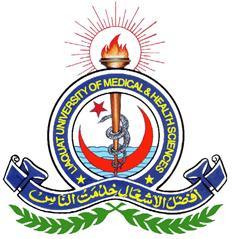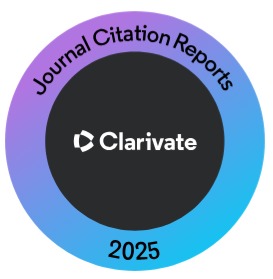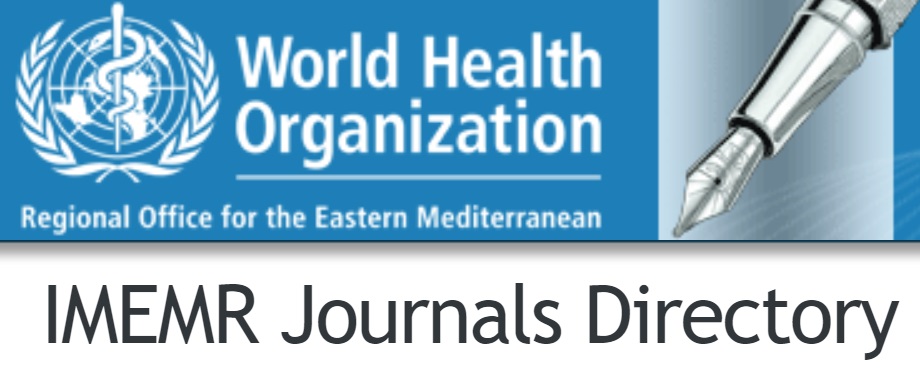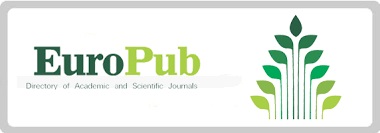Clinical and Demographic Characteristics of Dengue Patients in Public Sector Hospital
Keywords:
Dengue virus, Fever, Karachi, Seasonal variation.Abstract
OBJECTIVE: To determine the patterns of demographics, clinical presentation, and outcome among dengue patients treated at Dr. Ruth K.M. Pfau Civil Hospital, Karachi.
METHODOLOGY: This retrospective cross-sectional study comprised 1003 suspected dengue cases presented at Dr. Ruth K. M. Pfau Civil Hospital, Karachi, between September 2019 and February 2020. Medical records of 328 patients who tested positive for dengue infection on immune chromatographic technique (ICT) for recombinant NS1 antigen and/or IgM serology were included in the analysis.
RESULTS: Among 1003 suspected cases, 328 cases were laboratory-confirmed dengue fever; 82.3% (n=270) presented with acute dengue infection as they were positive for NS1 antigen only. 13.1% (n=43) of the patients were IgM-positive, whereas 0.9% (n=3) were positive for IgG. 3.6% (n=12) of the laboratory-confirmed dengue patients were positive for both NS1antigen and IgM. The majority of the dengue patients were from the district of South Karachi. Among all in-patients, 77 % (n=94) of the patients presented uncomplicated dengue fever, while 21.3% (n=26) of hospitalized dengue patients presented with dengue hemorrhagic fever. However, 1.6% (n=2) of hospitalized patients presented with dengue shock syndrome. Mortality was 1.6% (n=2).
CONCLUSION: We conclude that the epidemiology of dengue infection and seasonal disease variability in Pakistan's urban settings has not changed over the last decade but warrants continuous monitoring due to climate change. The disease is still more prevalent among young males with a classic presentation of dengue fever. Dengue hemorrhagic fever is relatively less common, while very few patients develop dengue shock syndrome, contributing to mortality.
References
Idrees M, Hussain W, Rehman HU, Tayyab GN, Afzal S, Fatima Z et al. Dengue virus serotype 2 (DEN-2): the causative agent of 2011 dengue epidemic in Pakistan. Am J Biomed Sci. 2012 Mar; 4(4): 307-15. doi: 10.5099/AJ120400307.
Topalis P, Dialynas E, Mitraka E, Deligianni E, Siden-Kiamos I, Louis C. A set of ontologies to drive tools for the control of vector-borne diseases. J Biomed Inform. 2011 Feb; 44(1): 42-7. doi: 10.1016/j.jbi.2010.03.012. Epub 2010 Apr 2.
Perera R, Kuhn RJ. Structural proteomics of dengue virus. Curr Opin Microbiol. 2008 Aug; 11(4): 369-77. doi: 10.1016/j.mib.2008.06.004.
Aranda C, Martínez MJ, Montalvo T, Eritja R, Navero-Castillejos J, Herreros E et al. Arbovirus surveillance: first dengue virus detection in local Aedesalbopictus mosquitoes in Europe, Catalonia, Spain, 2015. Euro Surveill. 2018 Nov; 23(47): 1700837. doi: 10.2807/1560-7917.ES.2018.23.47.1700837.
Semenza JC, Suk JE. Vector-borne diseases and climate change: a European perspective. FEMS Microbiol Lett. 2018 Feb 1; 365(2): fnx244. doi: 10.1093/femsle/fnx244.
Pakistan: Dengue outbreak Oct 2013. EP-2013-000136. Reliefweb. Available from: https://reliefweb.int/disaster/ep-2013-000136-pak.
Qureshi JA, Notta NJ, Salahuddin N, Zaman V, Khan JA. An epidemic of Dengue fever in Karachi--associated clinical manifestations. J Pak Med Assoc. 1997; 47(7): 178-81.
Mubbashir H, Munir S, Kashif R, Nawaz HB, Basit A, Khattak B. Characterization of dengue virus in Aedesaegypti and Aedesalbopictus spp. of mosquitoes: A study in Khyber Pakhtunkhwa, Pakistan. Mol Biol Res Commun. 2018 Jun: 7(2): 77-82. doi: 10.22099/mbrc.2018.29073.1315.
Khan J, Khan I, Ghaffar A, Khalid B. Epidemiological trends and risk factors associated with dengue disease in Pakistan (1980–2014): a systematic literature search and analysis. BMC Public Health. 2018; 18: 745. doi: 10.1186/s12889-018-5676-2.
The News Pakistan. Around infected 49,938 infected, 107 died of dengue in four years. Nov. 24, 2018. Available from: https://www.thenews.com.pk/print/397374-around-49-938-infected-107-died-of-dengue-in-four-years.
Fatima Z. Dengue infection in Pakistan: not an isolated problem. Lancet Infect Dis. 2019 Dec 1; 19(12): 1287-8. doi: 10.1016/S1473-3099(19)30621-8.
Teixeira MG, Barreto ML. Diagnosis and management of dengue. BMJ. 2009 Nov 18; 339: b4338. doi: 10.1136/bmj.b4338.
Organization WH. Dengue guidelines for diagnosis, treatment, prevention and control: new edition. WHO. 2009; Available from: https://apps.who.int/iris/handle/10665/44188.
Kautner I, Robinson MJ, Kuhnle U. Dengue virus infection: epidemiology, pathogenesis, clinical presentation, diagnosis, and prevention. J Pediatr. 1997; 131(4): 516-24. doi: 10.1016/s0022-3476(97)70054-4.
Kalayanarooj S, Vaughn DW, Nimmannitya S, Green S, Suntayakorn S, Kunentrasai N et al. Early clinical and laboratory indicators of acute dengue illness. J Infect Dis. 1997 Aug; 176(2): 313-21. doi: 10.1086/514047.
Mairuhu AT, Wagenaar J, Brandjes DP, Van Gorp ECM. Dengue: an arthropod-borne disease of global importance. Eur J Clin Microbiol Infect Dis. 2004 Jun; 23(6): 425-33. doi: 10.1007/s10096-004-1145-1. Epub 2004 May 18.
Tristão-Sá R, Kubelka CF, Zandonade E, Zagne SM, Rocha ND, Zagne LO et al. Clinical and hepatic evaluation in adult dengue patients: a prospective two-month cohort study. Rev Soc Bras Med Trop. 2012 Dec; 45(6): 675-81. doi: 10.1590/s0037-86822012000600004.
Khan E, Kisat M, Khan N, Nasir A, Ayub S, Hasan R. Demographic and clinical features of dengue fever in Pakistan from 2003–2007: A retrospective cross-sectional study. PLoS One. 2010; 5(9): e12505. doi: 10.1371/journal.pone.0012505.
Fatima Z, Afzal S, Idrees M, Rafique S, Akram M, Khubaib B et al. Change in demographic pattern of dengue virus infection: evidence from 2011 dengue outbreak in Punjab, Pakistan. Public Health. 2013; 127(9): 875-7. doi: 10.1016/j.puhe.2013.03.003. Epub 2013 Aug 22.
Aamir M, Masood G, Aamir W, Rasheed A, Ejaz A, Syed A. Gender difference in patients with dengue fever admitted in a teaching hospital, Lahore. Pak J Med Health Sci. 2014; 8(1): 12-15.
Kumar M, Verma RK, Mishra B. Prevalence of dengue fever in Western Uttar Pradesh, India: A gender-based study. Int J Appl Basic Med Res. 2020 Jan-Mar; 10(1): 8-11. doi: 10.4103/ijabmr.IJABMR_337_18.
Guerra-Silveira F, Abad-Franch F. Sex bias in infectious disease epidemiology: patterns and processes. PloS One. 2013 Apr 24; 8(4): e62390. doi: 10.1371/journal.pone.0062390. Print 2013.
Tahir Z, Hafeez S, Chaudhry AS. Spatial and seasonal variation of dengue fever in Lahore 2008. Biomedica. 2010; 26: 166-172.
Humayoun MA, Waseem T, Jawa AA, Hashmi MS, Akram J. Multiple dengue serotypes and high frequency of dengue hemorrhagic fever at two tertiary care hospitals in Lahore during the 2008 dengue virus outbreak in Punjab, Pakistan. Int J Infect Dis. 2010; 14 Suppl 3: e54-9. doi: 10.1016/j.ijid.2009.10.008. Epub 2010 Feb 19.
Chan HB, How CH, Ng CW. Definitive tests for dengue fever: when and which should I use? Singapore Med J. 2017 Nov; 58(11): 632-35. doi: 10.11622/smedj.2017100.
Downloads
Published
How to Cite
Issue
Section
License
Copyright (c) 2024 Journal of Liaquat University of Medical & Health Sciences

This work is licensed under a Creative Commons Attribution-NonCommercial-ShareAlike 4.0 International License.
Submission of a manuscript to the journal implies that all authors have read and agreed to the content of the undertaking form or the Terms and Conditions.
When an article is accepted for publication, the author(s) retain the copyright and are required to grant the publisher the right of first publication and other non-exclusive publishing rights to JLUMHS.
Articles published in the Journal of Liaquat University of Medical & health sciences are open access articles under a Creative Commons Attribution-Noncommercial - Share Alike 4.0 License. This license permits use, distribution and reproduction in any medium; provided the original work is properly cited and initial publication in this journal. This is in accordance with the BOAI definition of open access. In addition to that users are allowed to remix, tweak and build upon the work non-commercially as long as appropriate credit is given and the new creations are licensed under the identical terms. Or, in certain cases it can be stated that all articles and content there in are published under creative commons license unless stated otherwise.























